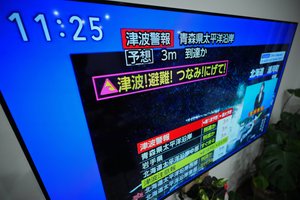By RYUTA KURATOMI/ Staff Writer
March 10, 2024 at 07:00 JST
TAKETA, Oita Prefecture--A more than 100-year-old wooden private home here was destroyed in a fire in January that investigators believe was inadvertently started by an intruder.
The local fire department pointed to the possible cause that was unexpected but is a relatively common culprit: animal dung.
The fire broke out in the one-story wooden house on the morning of Jan. 14, according to Taketa city’s fire department.
The 94-square-meter site was completely reduced to ashes.
A 71-year-old woman who resided in the home alone was not injured in the blaze.
The woman’s eldest son, 49, who lives elsewhere, told The Asahi Shimbun that his mother noticed flames coming from the attic.
Investigating what triggered the calamity, the municipal firefighting unit referred to a minor fire that had hit the residence in January 2010.
The blaze occurred in the attic that time, too, but that fire was put out by relatives before it could spread.
A nest of flying squirrels was discovered in the attic at the time. No other flammable materials were found there.
With this in mind, the firefighting headquarters concluded the minor fire was likely attributed to “flying squirrels’ excrement, as dung had likely fermented in their nest for a long time, generating heat that then made it catch fire.”
Agricultural manure and fodder marked by animal protein and fat are also thought to be able to produce heat through oxidation and fermentation, depending on their storage length and environment.
The temperature inside storage facilities can gradually rise to a flash point unless the generated heat is properly ventilated.
The city’s fire department said “feces from flying squirrels might be behind the latest blaze like it was 14 years ago,” though it acknowledged the actual cause is “difficult to pinpoint given the scene has been gutted by the fire.”
A department representative said, “The only countermeasure is filling gaps at homes, but mending houses may be unrealistic in communities whose residents have become increasingly elderly.”
The victim’s oldest son said it was possible that flying squirrels or rodents had invaded and inhabited the home via openings large enough for small creatures to access.
“My mother heard something in the attic, so she made loud noises to scare any animals away,” the son said. “They may have come back to dwell there anyway, though.”
FIND EARLY AND REMOVE
The internal affairs ministry’s Fire and Disaster Management Agency noted tiny wild animals and pets, including flying squirrels, rats, cats and iguanas, have already started fires in a series of cases.
The Tokyo-based Institute of Scientific Approaches for Fire and Disaster released an article detailing “blazes caused by animals” that was contributed by the Tokyo Fire Department’s survey division.
In one such incident, a sheath of a high-voltage overhead power line caught fire along a thicket. A charred, dead flying squirrel was spotted under a utility pole near the scene.
As the squirrel had burn marks apparently from electric shocks on its head and limbs, firefighters concluded the blaze came about because the animal gnawed through the covering of the high-voltage power cable.
In another example, a rat went through an opening in a door to a distribution switchboard at a restaurant.
It then came into contact with a wire joint within and started a fire.
Another disaster derived from a spider that had built a bag-shaped web in the corner of a burner for an outdoor bath furnace, causing gas to leak that would have otherwise gone into the burner. This also caused a fire.
Installed in an iguana cage to keep the pet warm, a heat lamp fell onto the sheeting on the bottom of the aquarium. This alike started a fire reportedly in an instant.
A representative of the Fire and Disaster Management Agency called for caution regarding small animals in nature finding their ways indoors.
“These animals need to be pinpointed and eliminated early,” said the official. “Aside from that, people should fill in any gaps in their buildings.”
The representative went on to say about pets as well, “They have to be monitored carefully so that they will not come into contact with electrical sockets and other risky objects.”




















A peek through the music industry’s curtain at the producers who harnessed social media to help their idols go global.
A series based on diplomatic documents declassified by Japan’s Foreign Ministry
Here is a collection of first-hand accounts by “hibakusha” atomic bomb survivors.
Cooking experts, chefs and others involved in the field of food introduce their special recipes intertwined with their paths in life.
A series about Japanese-Americans and their memories of World War II